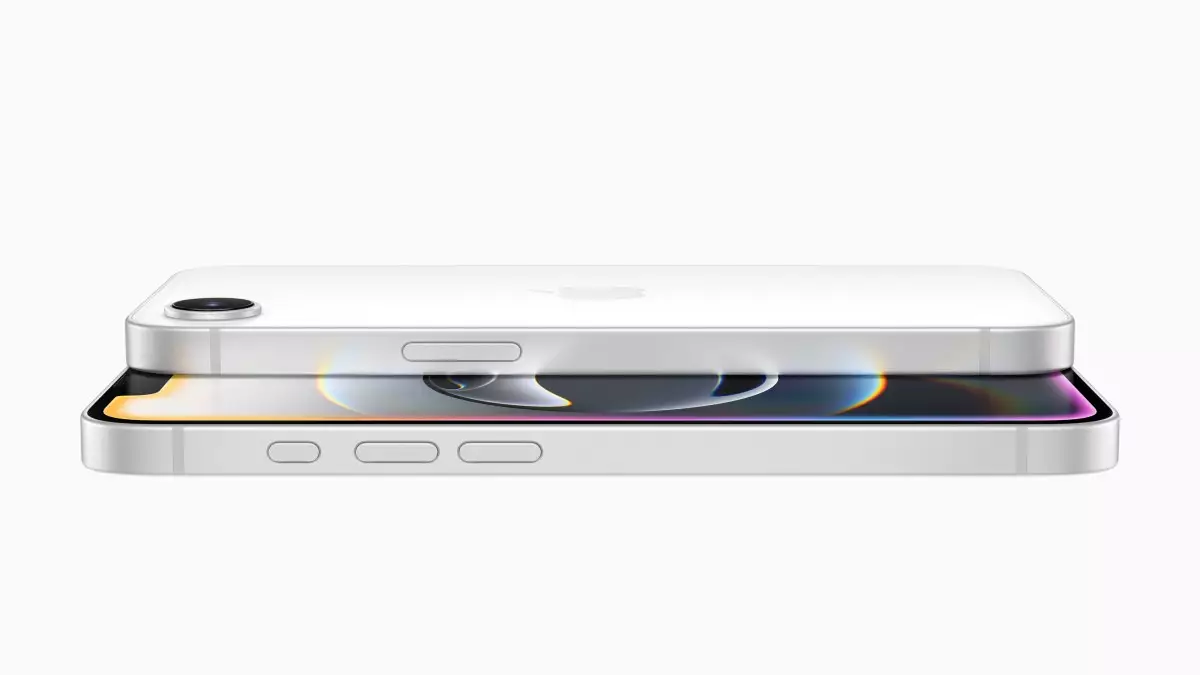In the realm of smartphones, Apple is consistently a frontrunner. Their recent unveiling of the iPhone 16e showcases a strategic pivot in their approach to budget devices. While the iPhone SE series has historically been a staple for cost-conscious consumers, the new iPhone 16e represents more than just an update; it signifies Apple’s intent to integrate its budget offering more closely with its premium lineup, emphasizing not only features but also a transformative user experience.
The transition from the iPhone SE branding to the 16e label is more than a cosmetic change. This decision reflects Apple’s ambition to unify its smartphone offerings under a cohesive identity, resonating with flagship devices. With the starting price set at $599, the iPhone 16e carries a noticeable premium over its predecessor, hinting at Apple’s strategy to attract consumers who desire advanced technology without the high-end price tag typically associated with flagship devices.
In this competitive landscape, Apple’s move may be interpreted as an acknowledgment of the evolving expectations of budget smartphone users. Consumers today are not merely looking for affordable options; they want devices that incorporate state-of-the-art technology and functionality. By branding the device under the same umbrella as its premium products, Apple aims to position the 16e as a credible alternative that does not compromise on quality.
One of the standout features of the iPhone 16e is the introduction of Apple Intelligence, positioning it as Apple’s competitor to AI platforms like ChatGPT and Google’s Gemini. This innovative technology enables the device to perform complex tasks right on the hardware, marking a significant leap forward. Such capabilities allow users to leverage advanced functionality for text generation, image creation, and even personalized interactions with Siri, all without needing an external account.
The incorporation of the A18 processor, noted for its impressive performance, plays a crucial role here. Not only does it power the basic operations of the device, but with its 16-core neural engine, it brings AI to the forefront of user experience, pushing boundaries previously set by older manufacturers. This commitment to in-house chip development, introduced by the new Apple C1 modem, emphasizes Apple’s strategy to reduce reliance on third-party suppliers, showcasing its goal to control the entire ecosystem of hardware and software.
In terms of design, the 16e significantly diverges from its predecessors. Gone is the Touch ID home button; instead, the device adopts Face ID technology, following the trend set by more recent iPhone models. It also revives the iconic camera notch reminiscent of the iPhone X, suggesting a sleek and modern aesthetic that is in line with current smartphone trends.
Transitioning from a Lightning port to USB-C further emphasizes Apple’s commitment to standardization across devices, enhancing user convenience and charging speed. The display upgrade to a 6.1-inch OLED screen yields a more immersive experience, particularly significant for consumers accustomed to larger screens.
In terms of battery life, Apple claims that the iPhone 16e offers the longest battery life seen in a 6.1-inch iPhone, extending usability beyond what previous models like the SE could manage. This advancement aligns with a growing consumer desire for prolonged device operation, reflecting a deeper understanding of user needs.
The launch of the iPhone 16e arrives at a crucial moment for Apple, particularly given its recent slip in market share within China, one of its most critical markets. This decline, coupled with increasing competition from domestic manufacturers like Huawei, calls for a revitalized strategy. By offering robust AI functionalities and appealing design at a competitive price, Apple aims to regain traction in regions where it has struggled.
Importantly, negotiations with significant Chinese tech firms such as Tencent and Alibaba to localize Apple Intelligence can enhance its appeal in the Chinese market, signaling a willingness to adapt to regional demands.
The iPhone 16e is not merely an iterative update; it is a bold reimagining of what a budget smartphone can be. By harnessing innovative technology, embracing a unified design language across its products, and adapting to market challenges, Apple positions itself not just to compete but to lead in the budget smartphone category. As pre-orders open, anticipation builds around how this device will redefine the value proposition for budget-conscious consumers, marking a significant chapter in Apple’s narrative.

